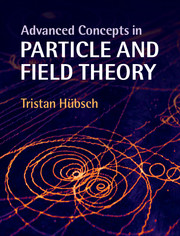1 - The nature of observing Nature
from I - Preliminaries
Summary
1.1 Fundamental physics as a natural science
The ultimate aim of this course is to present the contemporary attempt to perceive the (fundamental) structure and nature of Nature. First, however, we must examine the (methodo-)logical framework at the foundation of this aim.
Not infrequently, things are not as they seem
Although an erudite historian will certainly and readily cite earlier quotations of the thought ex-pressed in the title of this section, I should like to introduce this leitmotif as a Copernican legacy. The readiness to abandon the “obvious,” “generally accepted” and “common sense” for unusual insights – those we can actually check – is certainly an essential element. This motif permeates the development of our understanding of Nature, and reappears in its contemporary form as duality [Section 11.4].
Of course, not just any unusual insight will do: a lunicentric or an iovicentric system, for example, would offer no advantage over the geocentric cosmological system. Most significantly, heliocentricity simplifies both the conceptual structure and the practical application of the planetary system, and makes it more uniform. Although still assuming circular orbits and so in need of corrections, Copernicus' model is essentially simpler; maybe this could be regarded as a variant of Ockham's principle.
This idea is not yet Newton's universal law of gravity, but already contains its germ, its unifying motif: all planets follow the same type of regular motion and only appear to wander randomly (as their original Greek name implies). Also, the ultimate test of this model is easily identifiable: the positions and the motions of the planets determined by (the simpler) computations within the heliocentric system agree with astronomical observations.
Examples of this leitmotif begin at such a simple level that they are rarely noticed:
The shadow of an object is often distorted and many times larger than the object itself.
- Type
- Chapter
- Information
- Advanced Concepts in Particle and Field Theory , pp. 3 - 36Publisher: Cambridge University PressPrint publication year: 2015

